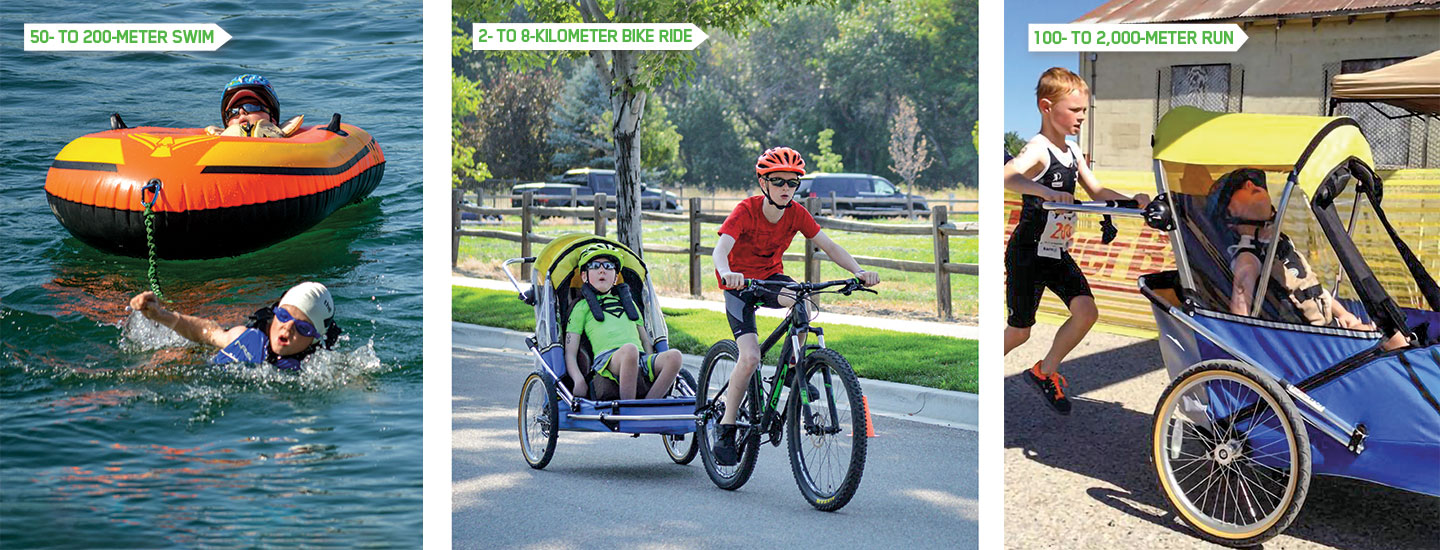Noah Aldrich takes his place at the starting line at the edge of a pool. The 13-year-old from Boise, Idaho, is about to begin a triathlon—a grueling endurance race involving swimming, biking, and running. But unlike the other athletes participating, Noah is wearing a harness attached to an inflatable raft. Lying in the raft is his 11-year-old brother, Lucas.
Noah Aldrich walks to the edge of the pool. There, he takes his place at the starting line. The 13-year-old from Boise, Idaho, is about to begin a triathlon. This difficult endurance race involves swimming, biking, and running. Other athletes line up to race, but Noah is the only one wearing a harness connected to a rubber raft. His 11-year-old brother, Lucas, lies in the raft.

